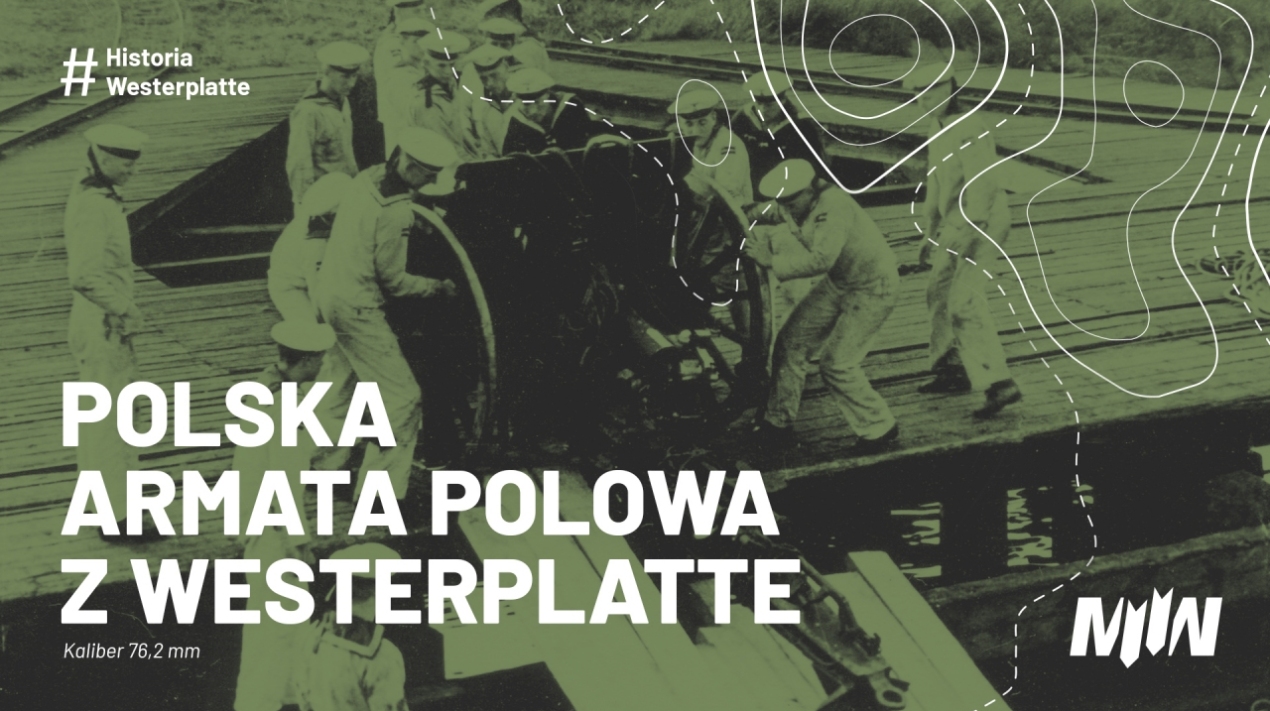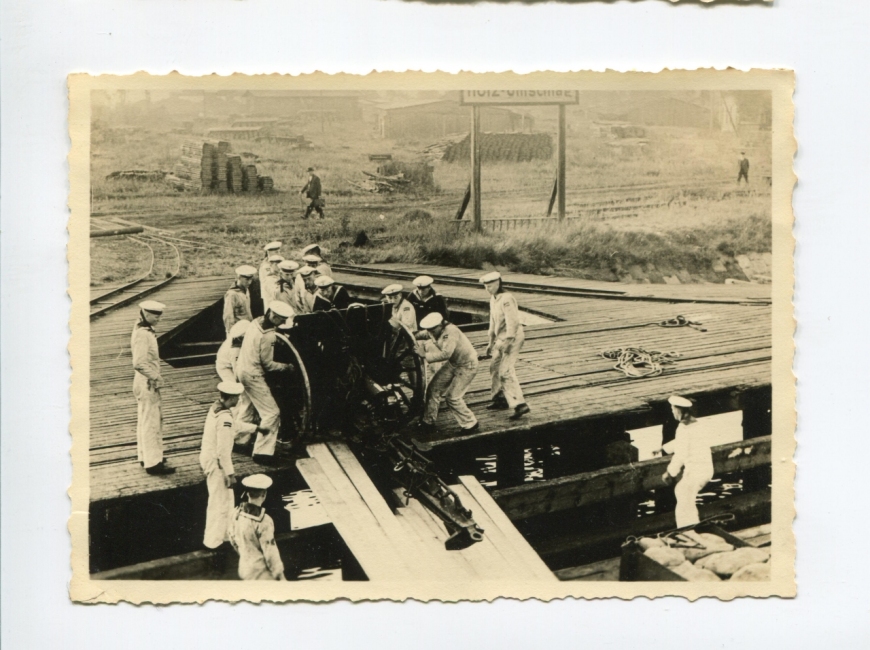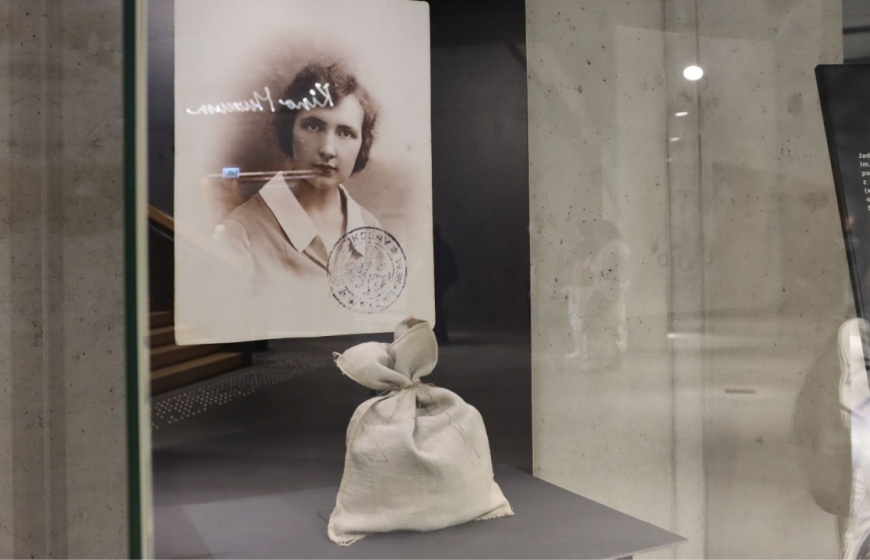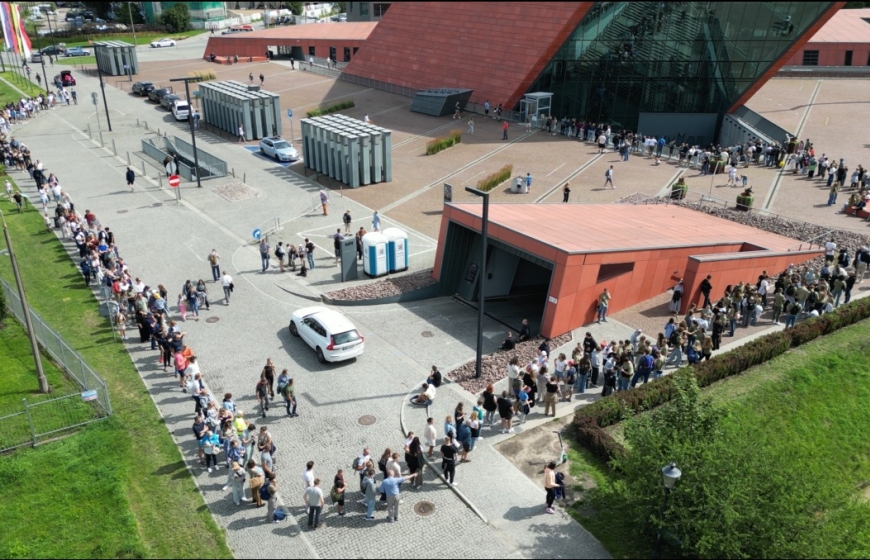#WESTERPLATTEHISTORY - FIELD GUN IN THE SERVICE OF THE POLISH GARRISON AT WESTERPLATTE
For decades, the pattern and consequently the caliber of the field gun serving as real reinforcement for the defenders of the Military Transit Depot at Westerplatte remained an unresolved issue. For years, the most frequently repeated information was that it was a 75mm caliber wz. 02/26 gun – a modernized Russian 3-inch gun adapted in 1926 to the Polish 75mm ammunition standard. Over time, researchers studying the defense of Westerplatte began to raise the question that one of the few unmodified versions of the wz. 02 gun might have been in the warehouse until August 1939 and was pulled out of storage just before the war. New light on this matter was shed by increasingly numerous archival photos showing the gun from Westerplatte as a war trophy captured by the Germans in September 1939. Thanks to the preserved iconography, the issue of the model and caliber was definitively resolved. According to specialists, it was an unaltered wz. 02 gun, caliber 76.2mm, not the previously believed, much more popular modernized version. However, the question of its potential survival had already fired the imagination of antiquities hunters and researchers interested in the history of Westerplatte. Does the gun still exist today, and what are the most important aspects related to it? We invite you to read today's article about the history of Westerplatte.
In 1939, seven soldiers from the 14th Cavalry Artillery Squadron in Białystok were assigned to Westerplatte to operate the gun, which had been secretly brought there in the summer of 1939. On July 30, 1939, the following soldiers appeared at the depot: Corporal Eugeniusz Grabowski, Senior Rifleman Wincenty Kłys, and riflemen Czesław Dzierzgowski, Czesław Filipkowski, Władysław Jakubiak, Józef Spiżarny, and Franciszek Żołnik. Each of them had the skills to operate artillery – in this case, a field gun, for which a specially camouflaged position was prepared in the western part of the peninsula. With the start of the war, the gun fired at German firing positions on the other side of the canal in Nowy Port. According to preserved and published accounts, after less than 30 shots, the Polish firing position was already detected on September 1st, 1939, and effectively neutralized by accurate German fire. The damaged gun was abandoned by the crew. The unexploded ammunition, potentially dangerous, was scattered around the depot, and the gun remained in its position until the end of the fighting. After the Polish garrison's surrender, the gun, as a trophy, was taken aboard the Schleswig-Holstein battleship. From then on, it was one of the main subjects of numerous photographs taken by the Germans. The prize was viewed by, among others, Admiral Erich Reader, who was then in command of the German navy in the Baltic. The gun was transported to Kiel in the fall of 1939 and placed in the courtyard of the Naval School in Mürwik near Flensburg. It remained there until the end of the war in 1945. The further fate of the famous gun remains unknown. Even in the 1980s, thanks to the efforts of Westerplatte researcher Jacek Żebrowski, former sailors from the assault company found the barrel of a potential Polish gun in Flensburg. Over the years, many people tried to bring the relic to Poland. According to information provided by the Association for Historical Reconstruction of the Military Transit Depot at Westerplatte, the gun barrel has been in the hands of a collector in Poland since the summer of 2008. Did the barrel, which resurfaced in Germany after many years, really come from a Polish gun?
Even a cursory analysis of the photos showing this artifact suggests that it is an entirely different construction, a different gun. Interestingly, the issue of properly identifying the barrel was raised at the end of the 20th century by Jacek Żebrowski, who participated in bringing it to Poland. It should be assumed, therefore, that the barrel itself, which was located at the naval school in Mürwik, is a remnant of a naval gun obtained from a German submarine, as indicated by the details of its construction. If the Polish field gun with a caliber of 76.2mm survived World War II, it most likely resides in a privately owned collection not widely known.
In conclusion, several questions arise. What parts of the gun made their way to Poland in 2008? Is it the same barrel that was supposed to be in Mürwik, and who currently possesses it? Did the Polish field gun from Westerplatte, caliber 76.2mm, really survive to the present day, and is it still in Flensburg?


















